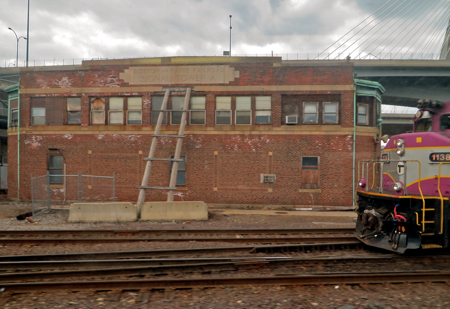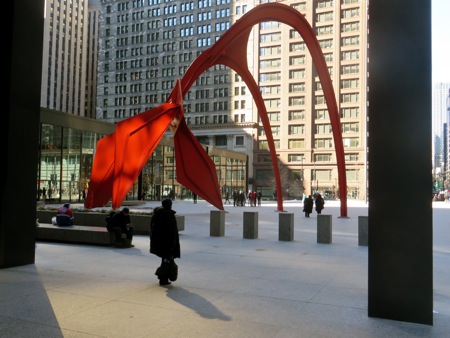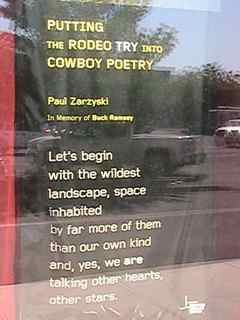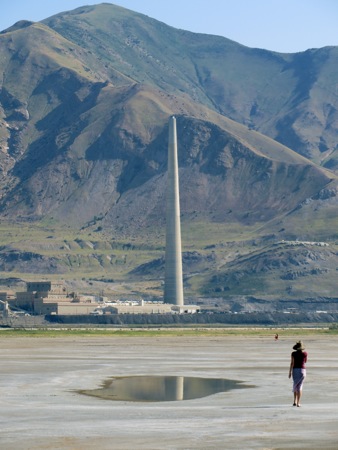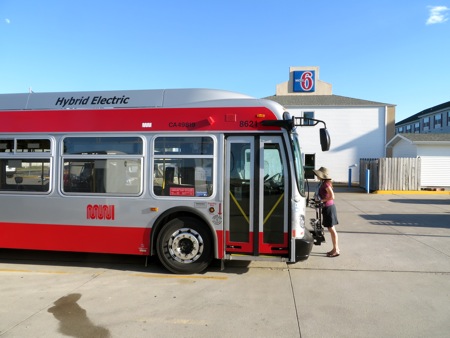Once we left Joliet, it wasn’t far to the outer edge of Chicagoland, that vast sprawling patchwork of suburbia and small cities that extends outward an hour’s drive from Chicago itself. And once we got past Joliet, it felt like we left behind the hustle and bustle and density of the eastern third of the United States: traffic got lighter, the distance between cities became greater, it seemed as though I could feel the density of human beings grow less.
We crossed the Fox River. We used to live near the banks of the Fox River, quite a ways upstream from where we crossed it, ten blocks from the little 1842 stone church building, built of stone hauled up from the river bed in part by the minister, Augustus Conant, the second oldest Unitarian church building still standing west of the Alleghenies.
The miles rolled by. We drove through the barely rolling fields of central Illinois, past the Quad Cities, into the gently rolling land of Iowa, driving almost due west. As we drove, I thought about the dream I had had last night:
Have you climbed up the tower? All the way to the top six levels? someone said to me.
No.
They implied the climb would be spiritually rewarding. So I started to climb.
The first six levels I had already gone up and down: prosaic open-mesh iron staircases of the kind you find in old industrial plants, winding up through a rusted iron structure. Then the staircase from the sixth to the seventh level got very steep, and was behind an iron gate that creaked open.
Then I got into the seventh level. This was the children’s level. A woman I had known in high school sat talking with some children. Bright walls, interesting toys. I moved some mannequins or puppets or dolls made out of wire, to get at the moveable stair case that would get me to the next level.
The eighth level was the map level: it was a balcony around the children’s level, with maps in big wide chart drawers, with big windows above the drawers to look out at the sun setting over the city and landscape beyond….
It was at this point in the dream that the horrendously loud fire alarm went off in the motel. We stumbled around, preparing to get out of the building, when the alarm went silent. We went back to bed, and I began to dream again:
…The ninth level was reached by a steep staircase, the level of Eternal Night: galaxies, suns, darkness, whirling around, and it appeared that in the darkness two or three awe-struck people sat, but of that I couldn’t be sure. I did not stay long there, because it seemed to me that it would be easy to stay there forever.
The tenth level was the level of peace, a peace that surpassed understanding, a place to be in peace. One man sat zazen — I looked at him, and thought, a little scornfully, how stereotypical! — this was a place where peace permeated your being without some painful exercise. I did not stay long here, either.
The eleventh level was the library: low bookshelves all around the four walls, under big picture windows with the sun shining in, trees and birds singing. I wanted to spend a long time here.
The twelfth level: a woman on the stairs warned me that the air was thin. I climbed up the next few stairs. The air was indeed thin; ten thousand, maybe fourteen thousand feet above sea level. I had a hard time catching my breath, but it was a stunning view.
Thinking about such trivial things can occupy the mind for many hours while driving. If you chose, I suppose you could interpret this dream as having deep metaphorical meaning; I ignored any supposed meaning, and just enjoyed remembering it. Soon we stopped at the self-proclaimed largest truck stop in the world. While Carol was inside getting something to drink, I watched as truck pulling an incredibly long blade of a wind turbine held up traffic as it slowly maneuvered into the truck stop:
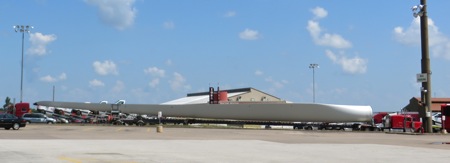
At the western edge of the loess hills of western Iowa, we pulled off at a sign that said “Scenic Viewpoint.” The entrance road wound up a knoll. We parked at the top, and climbed up half a dozen flights of steps made of pressure-treated two-by-twelves supported by telephone poles. At the top, we gazed around us: the broad valley of the Missouri River to the west, and to the north, east, and south, the loess hills rising two or even three hundred feet above the bottom of the valley. The tower swayed slightly in stronger gusts of wind, making me feel a little seasick. We were in a hurry to get to Yankton, to we climbed down and began driving again.
Heading north on Interstate 29, we drove through that broad valley of the Missouri River; through the strong smells of the rendering plants near Sioux City, winding along as we roughly paralleled the invisible river somewhere off to our left. After a time we left the interstate and headed due west, slowing down as we drove through the little college town of Vermilion, South Dakota, speeding up again on the other side until we reached Yankton. We ate dinner with Carol’s aunt, and I got to see pictures of Carol as a baby and a little girl.
